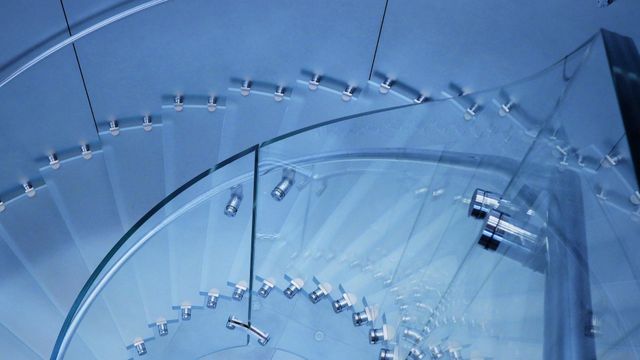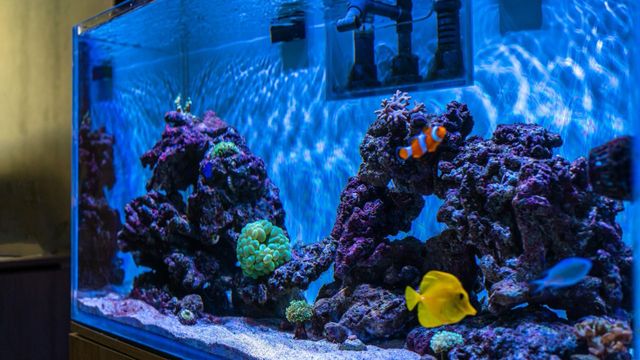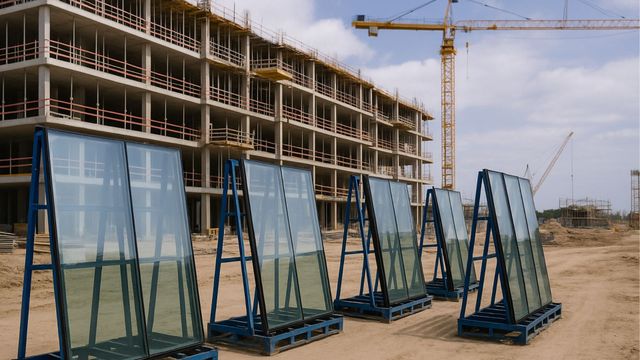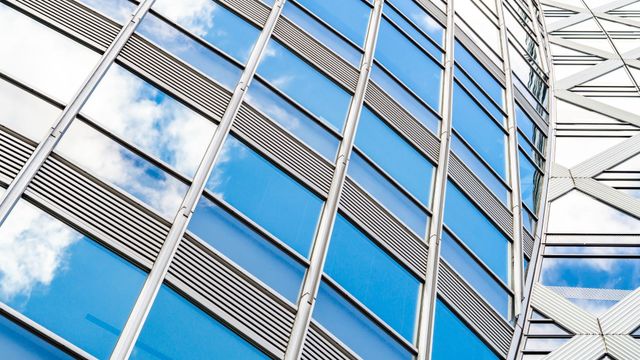Framing fabric under glass: ideas and considerations
Share this blog:
Want to frame fabric under glass? There are a few ways to go about it. Get the facts in our guide.
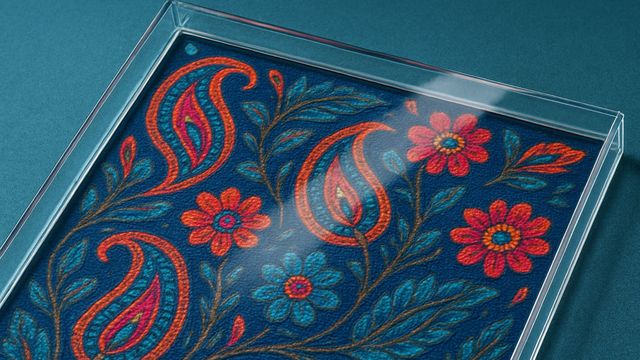
في بعض الأماكن، كالمتاحف والمعارض الفنية، يُؤطَّر القماش تحت الزجاج لإطالة عمره الافتراضي. ليس هذا فحسب، بل يُمكن للإطار الجيد أن يُسلِّط الضوء على القطعة الفنية أو الأثرية التاريخية.
لكن القماش لا يُؤطَّر تحت الزجاج في المؤسسات الثقافية فحسب، بل يُمكن تأطيره أيضًا لإنشاء قطع فنية تُعلَّق في المنازل والمكاتب والأماكن العامة.
ثم هناك قماش مُرَصَّع بين صفائح الزجاج. يُمكن استخدامه في صنع أعمال فنية أو تركيبات زجاجية مُزخرفة، مثل الحواجز والأبواب والنوافذ وحتى الدرابزين.
إنها طريقة متعددة الاستخدامات لعرض الأقمشة، تجمع بين قوة الزجاج وقوامه الرقيق. فكيف يتم ذلك؟
يعتمد الأمر كله على التأثير الذي تسعى إليه. على سبيل المثال، تختلف الأساليب المستخدمة في الأعمال الفنية اليدوية عن تلك المستخدمة في المتحف البريطاني أو المؤسسات الثقافية الأخرى.
في هذه المقالة، نلقي نظرة على بعض الطرق الأكثر شيوعًا. أولًا، كيف تُؤطّر القماش تحت الزجاج في المنزل؟
تأطير القماش تحت الزجاج في المنزل
لتأطير قطعة من القماش في المنزل، تحتاج إلى تجميع المواد الخاصة بك.
أولاً، تحتاج إلى إطار صندوق. سيضمن هذا عدم وجود تلامس مباشر بين القماش والزجاج. إذا اقتربت المادتان أكثر من اللازم، فقد تتراكم الرطوبة أو حتى العفن.
يمكنك شراء إطارات جاهزة أو تخصيصها. يعتمد ذلك على حجم القماش والمساحة التي ترغب بها حوله.
يمكن تثبيت القماش على لوح حصيرة، مثل تلك المستخدمة في المطبوعات. ويمكن تمديده على اللوح قبل تثبيته في الإطار. أو يمكن فصله عن الزجاج باستخدام فواصل من زجاج شبكي.
يجب أن تكون المواد المستخدمة في الدعامة والتركيب خالية من الأحماض. وإلا، فقد تُعرّض القماش للتلف.
هناك أيضًا طرق مختلفة لتركيب القماش. الطريقة التي تختارها تعتمد على متانة القماش.
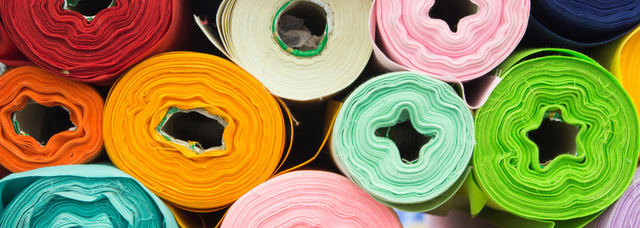
يمكن خياطة الأقمشة القديمة أو الرقيقة يدويًا. أما الأقمشة الأكثر متانة، فيمكن تثبيتها بدبابيس.
تتعلق خياراتك الجمالية الرئيسية بالإطار والمساحة المحيطة بالقماش. مع ذلك، يمكنك استخدام حصائر أو فواصل لجعل القماش يبدو وكأنه يطفو داخل الإطار. كما يمكنك استكشاف الإضاءة الخلفية وإضاءة الحواف.
تأطير القماش في المتاحف
إن مهمة المتحف هي الحفاظ على التراث وكذلك تقديمه - وتنعكس هذه الوظيفة المزدوجة في الأساليب التي تستخدمها المتاحف لتأطير القماش تحت الزجاج.
أولاً، يجب التعامل مع القماش بعناية لضمان عدم تلفه أثناء العملية. بعد وضعه في الإطار، يجب حمايته من الضوء والرطوبة.
وكما هو الحال مع تأطير القماش تحت الزجاج في المنزل، فإن المتاحف تختار أساليبها اعتمادًا على نوع وحالة القماش.
يُثبّت القماش على لوح منسوج مغطى بالقماش أو على نقالة. يمكن خياطة القماش أو تثبيته أو تثبيته بالضغط، حسب قوة القماش.
عادةً ما يُثبّت القماش المعروض في إطارات صندوقية. هذا يسمح للقماش بالتنفس ويمنعه من ملامسة الغطاء الزجاجي مباشرةً.
هناك اعتبار آخر وهو نوع الزجاج المستخدم لتغطية القماش. غالبًا ما تستخدم المتاحف زجاجًا واقيًا من الأشعة فوق البنفسجية لحجبها، والتي قد تُلحق الضرر بالقماش مع مرور الوقت.
تأطير القماش تحت الزجاج في المعارض
في المعارض، غالبًا ما يُؤطَّر القماش تحت الزجاج بطريقة مشابهة للمتاحف. مع ذلك، هناك بعض الاختلافات.
عادة ما يتم تمديد قطعة القماش الفنية بشكل مشدود على إطار خشبي ثم تثبيتها بدبابيس أو لصقها في مكانها.
كما هو الحال في المتاحف، تُستخدم تقنيات الترميم لحماية المواد. وتشمل هذه التقنيات مواد تثبيت ودعم خالية من الأحماض، وزجاجًا فنيًا واقيًا من الأشعة فوق البنفسجية.
يمكن استخدام إطارات الصناديق، ولكن غالبًا ما تستخدم المعارض إطارات خاصة تُعطي مظهر إطار داخل إطار.
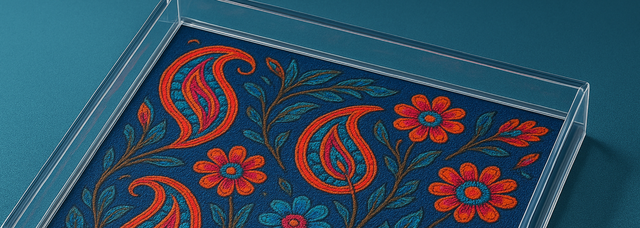
غالبًا ما يُضاء المنتج النهائي بمصابيح LED، وهي مصابيح منخفضة الأشعة فوق البنفسجية، مما يحمي القماش من التلف الناتج عن الضوء.
في بعض الأحيان، يتم نقل الأقمشة القديمة أو الحساسة بشكل خاص حول المعرض لزيادة عمرها ومنعها من البهتان.
ما هو الزجاج الواقي من الأشعة فوق البنفسجية؟
الزجاج الواقي من الأشعة فوق البنفسجية هو نوع من الزجاج مُصنَّع خصيصًا لحجب الأشعة فوق البنفسجية. هذه الأشعة قد تُلحق الضرر بالأعمال الفنية والصور والأقمشة وغيرها من المواد.
يُعرف الزجاج الواقي من الأشعة فوق البنفسجية أيضًا باسم "زجاج الحفظ" أو "زجاج المتاحف"، وهو مُغطى بطبقة تمتص أو تعكس الأشعة فوق البنفسجية، مما يُساعد على إطالة عمر المواد المُؤطرة تحته.
Fabric laminated glass
جميع الطرق التي ذكرناها تُستخدم للحفاظ على القماش وحمايته. بهذه الطرق، يُمكن استرجاع القماش عند الحاجة. ولكن ماذا لو أردتَ إنشاء قطعة قماش مؤطرة دائمة؟
This is where
fabric laminated glass comes in.
Laminated glass is a type of safety glass that works a bit like a sandwich. Two outer layers of glass cover an interlayer. This can be made out of plastic or, in the case of our
fire-resistant glass, a special kind of gel.
هنا تنتهي المقارنة مع الساندويتش. الطبقة الداخلية ملتصقة بالطبقات الخارجية، مما يُنتج منتجًا زجاجيًا متينًا للغاية يصعب كسره.
Laminated glass is primarily a safety product. But the interlayer can be decorative, too. It can have a
metallic mesh effect or a
colour – or it can be made of fabric.
At ToughGlaze, we offer
TG FI, a strong, versatile and beautiful fabric laminated glass product. It can be used in many residential and commercial applications, backlit or edge-lit, made with different kinds of glass and even installed outside. And like all our products, it's manufactured to meet British industry standards.
So, if you're looking for high-quality
fabric laminate, don't hesitate to
get in touch with ToughGlaze for a quick, competitive quote. We can offer a rich catalogue of fabric options or create a bespoke design for your project.









